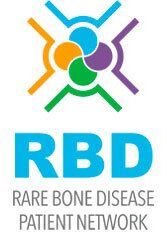
Understanding Complex Lymphatic Anomalies: A Comprehensive Patient Guide to CLAs
Complex lymphatic anomalies (CLA) encompass a group of rare diseases characterized by the abnormal growth of lymphatic vessels, leading to various manifestations across multiple organ systems. These conditions include Gorham Stout Disease (GSD), Generalized Lymphatic Anomaly (GLA), Kaposiform Lymphangiomatosis (KLA), and Central Conducting Lymphatic Anomaly (CCLA). Our new comprehensive patient guide aims to shed light on these rare conditions, providing valuable insights into their causes, symptoms, diagnosis, and treatment options.
1. Understanding Gorham Stout Disease (GSD):
Also called vanishing bone disease, GSD is characterized by progressive loss of the hard outer surface of the bone. GSD can progress rapidly but can also spontaneously stabilize. It typically extends beyond the original site of disease, involving nearby bones, and is much more common in the head, neck, back and chest.
2. Generalized Lymphatic Anomaly (GLA):
GLA is characterized by lymphatic malformations affecting soft tissues, bones, and organs like the spleen. The condition can lead to abnormal fluid collection around the heart, lungs, or abdomen, known as pericardial, pleural, or peritoneal effusions, respectively. Additionally, GLA can cause the loss of lymph fluid through the intestines and result in low numbers of infection-fighting cells.
3. Kaposiform Lymphangiomatosis (KLA):
KLA is a complex lymphatic anomaly with features of both uncontrolled cell growth and malformation. KLA is considered an aggressive subtype of GLA and has characteristics that overlap with both GLA and CCLA. Unique features of KLA include the presence of spindle cells, rapid and progressive growth, and significant bleeding.
4. Central Conducting Lymphatic Anomaly (CCLA):
CCLA is characterized by dilated and dysfunctional lymphatic vessels in the torso leading to the backflow of lymphatic fluid into tissues. The dysfunction in part results from abnormal formation of lymphatic valves in the large lymphatic vessels.
5. Diagnosing Chronic Lymphatic Anomalies:
Doctors may use the following test to aid in the diagnosis:
- Biopsy
- Bone scan
- Bronchoscopy
- CT scan
- MRI
- Lymphangiogram
- Skeletal survey
- Ultrasound
- X-ray
- Blood tests
- Genetic tests
6. Treatment Approaches for CLA:
There is no standard approach for treatment for CLAs. Treatment is often aimed at reducing and easing symptoms. A multidisciplinary, team approach to care and treatment is highly recommended and often necessary.
In conclusion, Complex Lymphatic Anomalies (CLA) encompass a group of rare diseases that present unique challenges to patients and healthcare professionals alike. The LGDA patient guide aims to provide valuable insights into these conditions, from their causes and symptoms to potential treatment options and coping strategies. While CLA may be rare, knowledge and awareness are crucial in promoting early detection and improving the overall quality of life for those affected by these conditions. Remember, you are not alone in this journey, and there is hope for a brighter future through ongoing research and medical advancements.
Download “Understanding Complex Lymphatic Anomalies: A Guide for Patients and Families” guidebook. Now available in 9 languages.
✨ Be the Beacon ✨ Illuminate lives, donate, and make a lasting impact against GLA. Your generous contribution can help us drive research and create awareness for those fighting this rare disease.










